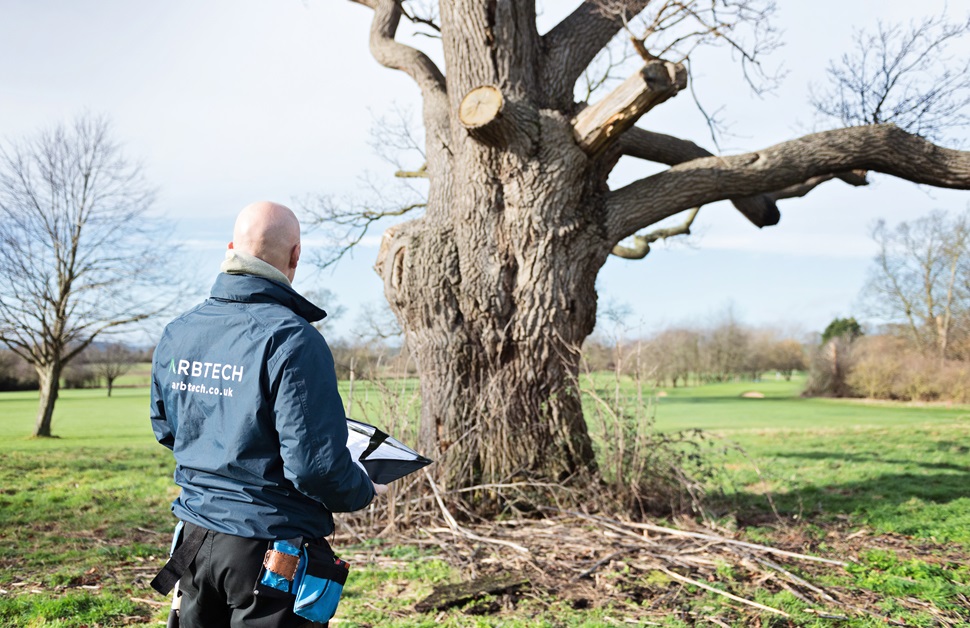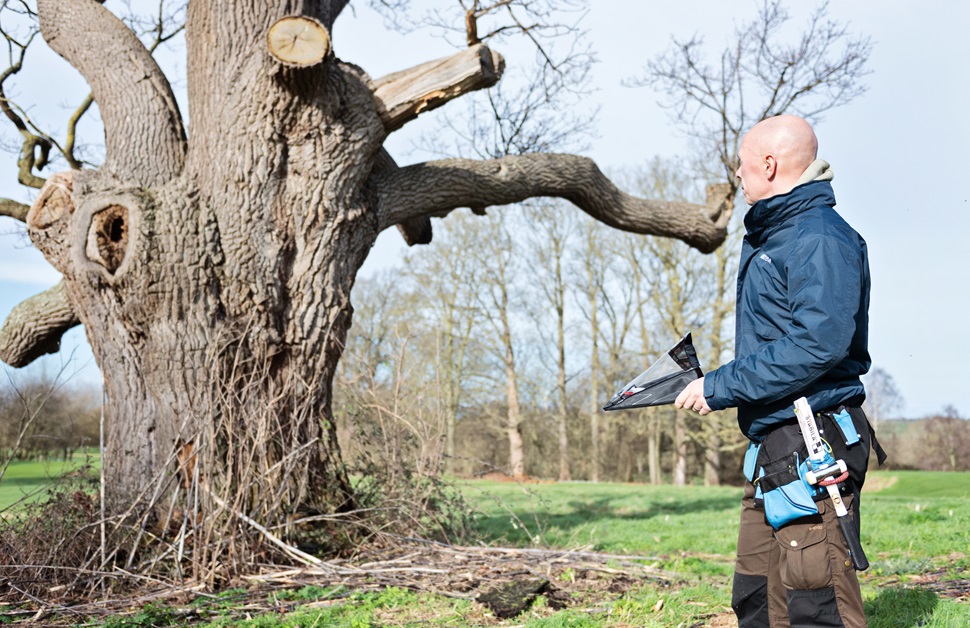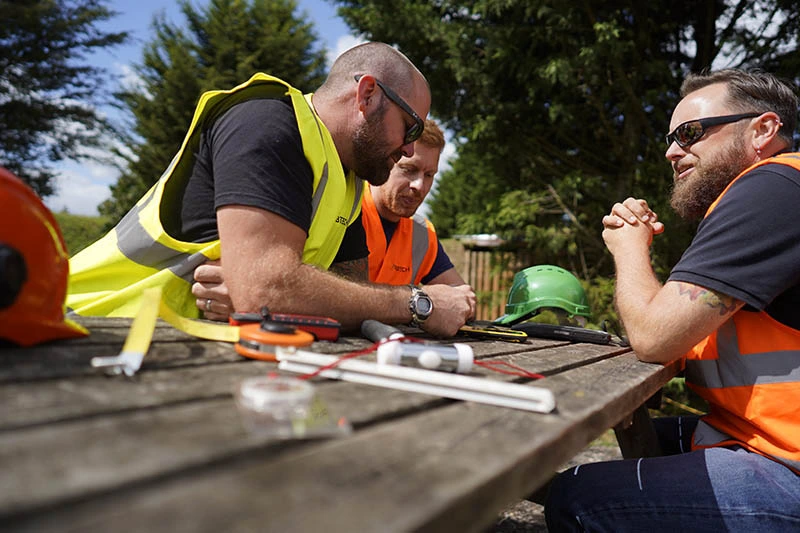Tree Risk Assessment and Management
Offering countless benefits such as the ability to produce oxygen, eliminate carbon dioxide, house various species of animals and plants, shelter livestock, counteract pollution and improve the visual appearance of an outdoor area, trees are desirable assets in the natural environment.
Efforts to enhance biodiversity, reverse negative impacts and meet carbon-neutral targets have seen local authorities encouraging the planting of more trees. While the addition of trees is a huge benefit, individual trees are equally as capable of causing a level of harm or nuisance to people and property.
From falling branches to the consequences of poor weather and complete tree failure, landowners should factor in the management and assessment of tree risk as an important part of their priorities.
Our tree risk assessments use the VALID Tree-Risk Benefit Management system to provide clear, proportionate and legally compliant recommendations, helping landowners manage tree stock safely and lawfully, and giving consideration to a tree’s economic, environmental and social contributions.
What Risks Do Trees Pose to People and Property?
Different types of issues can result in a tree posing potential hazards to both people and property. The local environmental conditions could mean that high winds, severe storms and changes in temperature lead to branches and entire trees falling.
In other cases, a given area where trees are present may be close to busy roads, populated buildings or pedestrians passing by, making it a high-risk component for people and infrastructure. Duty holders must ensure the safety of their trees and any possible dangers, especially if the tree develops a tree disease or is dead or dying.
Whether the responsibility of the tree falls to a homeowner, landowner, business, local authority or designated tree manager, the individuals will be treated as duty holders with a duty of care to organise professional tree inspections intended to monitor and assess tree risk. If, for instance, a tree was an unacceptable risk and caused damage to a property or a personal injury to a person, the duty holder could be subjected to any level of penalties.

What is a Tree Risk Assessment?
Also titled a tree risk survey and tree condition survey, a tree risk assessment is a type of tree inspection carried out to address potential safety concerns caused by trees. It analyses both the current physiological and structural condition of the trees and the surrounding environment, helping to gauge how nearby infrastructure and people could be affected by tree failure and other health and safety issues.
Unlike the BS5837 tree survey used for planning, tree condition surveys can be utilised for a wide range of purposes and focus specifically on public safety and legal compliance. As a private landowner, tree owner or local authority, a tree risk assessment may be needed to ensure that trees don’t pose a level of danger to nearby people or property.
If a tree is found to be an unacceptable risk and causes harm, the duty holder would likely be held liable in the eyes of the law. If trees are falling or breaking apart into debris or in an otherwise poor state, it will be the responsibility of the person in charge of the land or the tree to organise a tree risk assessment that complies with health and safety legislation to prevent harming nearby people or damaging proximate buildings.
VALID Tree Risk Assessment
Created with the goal of simplifying and optimising the tree risk assessment process, VALID is a management system that incorporates all considerations into a single application. It integrates scientific principles and legal standards such as the Tolerability of Risk (TOR) framework and ISO 31000 (Risk Management) from the Health and Safety Executive (HSE) to offer transparent and defensible risk management.
Trained arboricultural surveyors otherwise known as consulting arborists use VALID to assess and manage tree risk to a certain level. Tree surveyors trained in the VALID approach are known as Validators. They will assess all possible hazards trees could pose while taking into consideration the benefits they provide, ensuring that tree management decisions are proportionate, legally compliant and environmentally sustainable, resulting in clear and actionable data to guide tree risk surveys and the duty holder.
The VALID tree risk assessment app itself has been designed, developed and tested by experts in natural hazards and risk. It is free to download but often only applicable for undertaking tree risk assessments, meaning that arboricultural consultants undergo extensive training before using it. As Validators, they can then harness VALID to conduct tree risk assessments and create suitable tree risk assessment strategies.
What We Do During a VALID Tree Risk Assessment
VALID makes it clear how the tree risk-benefit management strategy works to deal with any and all potential hazards involving present trees. The strategy itself is a process followed by the qualified risk assessor in all of our tree risk surveys.
Tree Risk Management Strategy
1. Basic Assessment
Starting with a basic survey at ground-level, a visual inspection of all trees will identify any obvious risk features, such as cracks, decay or other signs of instability. The passive assessment highlights trees that require further investigation based on visible defects.
2. Detailed Risk Assessment
If potential risks are identified, we move on to a detailed assessment, which considers three key factors:
– Likelihood of Failure: The probability that the tree (or parts of it) may fail.
– Likelihood of Occupancy: The probability of people or property being present in the potential impact area when the failure occurs.
– Consequences of Failure: The severity of potential damage or injury resulting from tree failure.
The factors above are calculated based on the HSE’s Tolerability of Risk (TOR) framework incorporated into the VALID traffic light system.
3. Risk Categorisation Using the Traffic Light System
Results from the tree assessment are categorised using VALID’s traffic light system. The rating system within the VALID app is clear, only relying on four different colour-coded results.
Each rating will then indicate the suitable outcome for trees on the site between options to retain, relocate or destroy.
- Red: Not Acceptable – Risks need to be reduced to an acceptable level.
- Amber: Not Tolerable – Risks need to be reduced to an acceptable level but with a lower priority to a ‘Red: Not Acceptable’ rating.
- Amber: Tolerable – Risks do not need to be reduced but may need more frequent inspections.
- Green: Acceptable – Risks do not need to be reduced.
4. Advanced Assessment (if required)
For trees that present complex risks or where uncertainty remains, we may recommend advanced diagnostic methods such as an aerial inspection or sonic tomography exercise to assess the internal structure of the tree, ensuring that all potential hazards of old, dangerous or falling trees are fully understood.
Reporting and Recommendations
At the conclusion of the assessment, we provide a detailed final report that includes the findings for each tree assessed. For every tree, we generate a one-page summary that details the specific risk rating and recommended actions. The final report includes:
1. Risk Ratings: Clear risk ratings for each tree using the VALID traffic light system, which informs the next steps for risk management.
2. Risk Review Year: Recommended re-inspection schedules based on the risk rating, ensuring that risks continue to be managed effectively over time.
3. Risk Reduction Recommendations: Specific actions to mitigate risks, such as pruning, deadwood removal or felling where necessary.
4. Advanced Assessment Suggestions: If further investigation is required to determine the structural integrity of the tree, we recommend advanced techniques like sonic tomography.
5. General Management Advice: Broader advice for maintaining tree health and safety or nuisances relating to trees, tailored to the tree population on the site.
Our structured reporting provides duty holders with clear, actionable plans to manage tree risks in a legally compliant and environmentally sustainable way.
Measuring Tree Condition
Before an arboricultural consultant or tree surveyor is in a position to confirm the condition of a tree and whether it could cause any potential risks, a comprehensive inspection of the affected trees will take place.
Data regarding the tree will be collected through a combination of visual evidence, in-depth readings from applicable tools and equipment, and information about the tree such as species and predicted age.
Tree Risk Assessment Methods
In all of the tree surveys we do, it is crucial to ensure that the highest standards and latest methods are used. Our tree risk assessments are no different, with good tree management based on the guidance of such documents as the Common Sense Risk Management of Trees from the National Tree Safety Group, as well as any tree survey updates emerging from the Arboricultural Association, the Forestry Commission and VALID.
If ever a one-day training course or something more comprehensive is needed, our team will take part as a way of maintaining the required standard of tree risk assessment certification. As a result, our tree surveyors are extensively knowledgeable about the VALID tree risk app, the tree risk assessment process, and the needs of clients, local authorities and relevant regulators.
Tree Risk Assessment Tools
In addition to the VALID tree risk app, multiple tools and pieces of equipment may be used to evaluate the risk from trees. Such items include:
- Binoculars
- Blunt Screwdriver
- Hand Rake
- Mallet
- Measuring Tape
- Resistograph
- Steel Probe
- Trowel

Clients Our Tree Risk Surveys Apply To
Aside from any issues that indirectly relate to planning such as a high-risk tree obstructing a development or issues caused by an ongoing Tree Preservation Order (TPO) or conservation area, a tree risk assessment is not solely used to support an application for planning permission. Instead, it can help an assortment of purposes for a broad selection of duty holders, such as:
Homeowners
- Tree Managers
- Tree Owners
Landowners
- Estates
- Farming
- Public Buildings
- Schools
Local Authorities
- Agencies
- Councils
- Highways
Whether you’re managing trees for public safety or on private land, our VALID tree risk assessments offer reliable, evidence-based guidance to ensure that risks are managed effectively while complying with legal requirements.
Tree Risk Assessment Near Me
More than three billion trees appear across the entirety of the United Kingdom, with even the less rural and more urban areas displaying patches of woodland. Due to that factor alone, we cater to all clients by supplying an arboricultural consultant to each location. In doing that, all potential tree problems can be dealt with, addressed, monitored and eliminated.
Refer to one of the arboricultural surveyors close to you by contacting our team and explaining the situation to our administration staff. Instead of using a one-size-fits-all approach and assuming that local details will be irrelevant, we can use our system to instruct a local tree consultant to visit your site, bringing with them crucial insight and expertise of the area where your new account came from.
How Much Does a Tree Risk Assessment Cost?
If you were to book any type of assessment with Arbtech, you would often find that we have set baseline prices for the survey and only increase them based on the size of the development site. In the case of trees, the tree survey cost is primarily decided by the number of trees on the site, as surveying 500 trees will take much more time and effort than surveying 50 trees.
During the process of pricing up a certified tree risk assessment, a similar approach is used, evaluating the cost by the number of trees and the complexity of the site. We provide transparent pricing based on the scope of the work required, and if any further tree survey services are needed, our team can price up how much that will cost and tailor our services to your needs by carrying out the assessments in-house using the same team of arboricultural surveyors.
How Do I Arrange a Tree Risk Survey?
If you need a tree risk assessment for legal compliance, tree work, planning applications, tree safety of potentially hazardous trees or for any other reason, get in touch with our team, and we can talk you through the process and explain how a tree condition survey could help you. A free quote is available to all clients who contact us, with options to visit our website and fill out a quote form, call us directly or check out our social media platforms.
On a suitable date, one of our tree surveying Validators will visit your site to assess tree risk, undertake a tree risk assessment and begin making recommendations based on the tree risk-benefit management strategy, scientific evidence, legal standards and sustainable methods. A tree report designed to manage risk to trees will then be given to you, explaining what you need to do to meet your goals.


